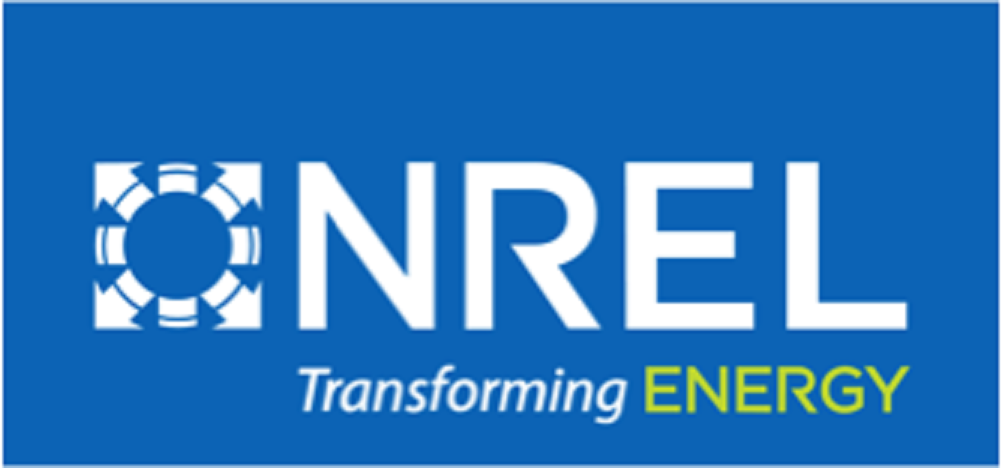NREL: Better Cost Estimates Build Better Systems: NREL Updates SAM Wave and Tidal Tools
The System Advisor Model (SAM) is an open-source software that combines performance and financial analysis for a suite of renewable energy technologies such as photovoltaics, wind, geothermal, marine energy, and more. Since its launch in 2007, new SAM versions have been released yearly, adding to the collection of technologies and financing options it can accommodate.
Photo of a marine energy device in the water, a small boat rests alongside it. Four people wearing life vests are standing on the far end of it. A waterside building is on the far left hand side of the photo.
Check out the open-source marine energy SAMs to help your next wave or tidal energy project set sail. Photo by Ian Gagnon, U.S. Department of Energy
In early 2020, the National Renewable Energy Laboratory (NREL) added marine energy (ME) to the SAM toolkit, enabling the marine energy community to perform cost and performance analysis of a potential system quickly and consistently. Let’s learn a bit more about the ME SAM and the exciting new upgrades it features.
Taking SAM to Sea
The recently released version of SAM now includes modeling capabilities for both wave and tidal energy. The model estimates annual energy production (AEP) and the levelized cost of energy (LCOE) for wave and tidal energy systems at a host of geographical locations.
AEP and LCOE are important metrics for the energy industry. AEP captures the total amount of energy produced in a year’s time, whereas LCOE is a measure of project lifetime costs divided by energy productionPDF.
The Marine Energy Wave Model can be applied to systems that use a wave energy converter (WEC) to transform the energy of ocean waves into electricity.
SAM’s two built-in libraries offer default data for both sample systems and locations, and the model can be run with this default data, or users can provide their own data.
The wave resource library includes data for U.S. locations such as the California Central Coast, California Humboldt Bay, Oregon, North Carolina, and Hawaii. The device library includes power matrices for three types of WECs: heaving buoys, oscillating surge wave converters, and a backward bent duct buoy floating oscillating columns. Alternatively, users may upload power matrices for unique devices to perform the simulation.
The Marine Energy Tidal Model can be applied to systems that employ a tidal energy converter to convert the energy of ocean tides into electricity.
ME SAM can accommodate a wide range of users at varying levels of detail, too. The tool can help early-stage technology developers to perform quick feasibility studies and estimate system costs outside of their research focus. ME SAM can also be used to produce replicable cost models and frameworks for developers at a high technology-readiness level. Users such as the national laboratories and DOE’s Water Power Technologies Office can enjoy streamlined internal reporting and expanded analysis, while other marine energy stakeholders can leverage the ME SAM to quickly estimate the techno-economic potential of marine energy projects and plan for future technology options.
What sets the ME SAM apart from other tools is its ease of use. It requires minimal inputs to quickly get an estimate of total project costs, annual energy production, and LCOE for a given marine energy system.
Cost, Reporting, and Comparison Functionality
Recently, the team developed three additional upgrades to augment the functionality of this valuable tool.
Expanded cost input pages will allow users to employ either high-level or more granular cost inputs.
Also, ME SAM now boasts two new macros. The ME Wave Report macro will allow users to generate a report summary for the ME system modeled in SAM. The ME Wave Compare Cases macro will allow users to compare multiple cases and produce a simple report, featuring graphs and tables to summarize the comparison.
New Features in the New Year
The recent additions are just scratching the surface of ME SAM’s vast potential. Be on the lookout for future upgrades, which will leverage more than a decade of SAM software tool development.
Throughout 2021, the NREL team will continue to refine ME SAM and expand upon its energy production modeling capabilities by integrating it with the Marine and Hydrokinetic (MHK) Atlas.
This integration will allow users to download up to 30 years of time history hindcast data using latitude and longitude coordinates for marine energy resource locations in the United States. It will enable broader energy analysis capabilities, allowing users to take a closer look at energy production over daily, weekly, and monthly intervals from a vastly expanded set of locations, too.
Additionally, the future upgrade will facilitate better comparisons of marine renewable energy with other types of renewable energy sources. For example, users will be able to employ the tool to compare the energy production of a marine energy system to an offshore wind system over a specific time period, rather than having to view the data from solely an annual perspective.

